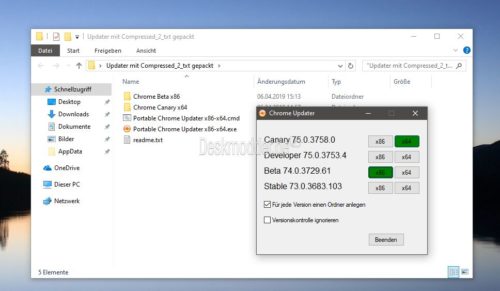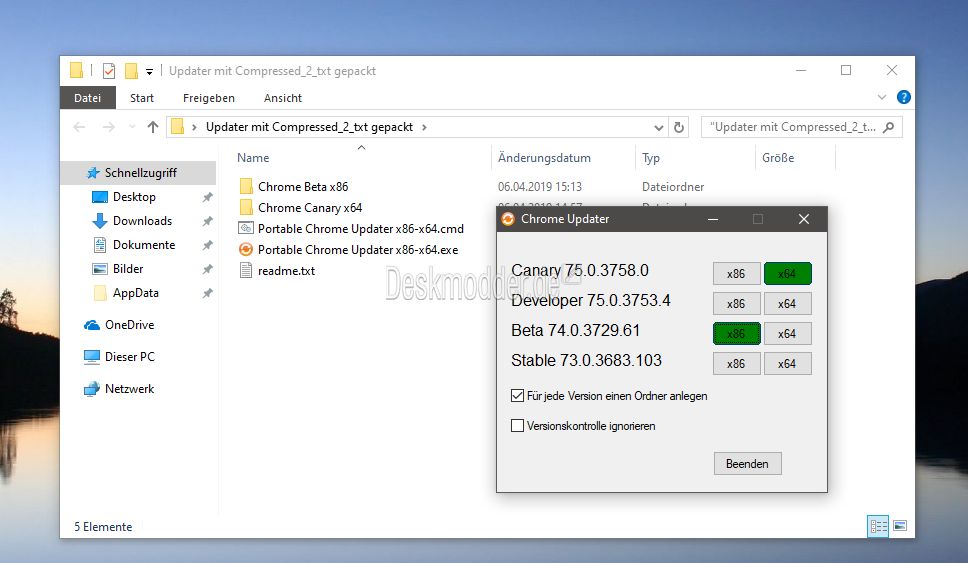


Other new things worth mentioning: a bug reporting tool for DevTools itself and additions to the Timing section, including Largest Contentful Paint, which measures time to render the largest content element in the viewport.
Chrome canary x64 code#
There’s also a payment handler debugger in the Background Services section of the Application panel, and a new third-party diagnostic tool in the Audits panel that tells you how much third-party code was requested and how long it blocked the main thread while the page loaded.

If Audits says that render-blocking resources are slowing down a page, you can use the Request Blocking tab to block those scripts, then re-Audit the page to see if you’ve correctly identified the problem. Canary featuresĭevelopers get early access to new additions to Chrome DevTools in Canary.įor example, right now, Canary users can use Audits and dev tools like Request Blocking and Local Overrides to diagnose website performance. Let’s look at the features, flags, and APIs developers are using. Some users like to use Canary because they use Stable for work and work-related applications. If you’re not a developer, you can use Canary to get a glimpse of where Chrome might be heading, or to get a more modifiable browser experience. Developers can test new features, APIs, changes, and flags while enjoying a stable environment for day-to-day work too. Who should use Chrome Canary?Ĭanary is mainly for developers. It’s updated nearly daily with new features, and because it can be run alongside Chrome’s Stable channel for testing and development purposes, developers get access to the latest features while getting the stable, polished Chrome everyone else is using. It’s not totally ad-free, but it does seem to show a lot fewer ads than Stable, and the interface is a little cleaner. The autofill CSS feature was available first in Canary, months before it was released as part of Stable.įinally, Canary offers a less-cluttered search experience. Linux users don’t get access to Canary.Ĭhrome Canary is also a better environment for developers than other Chrome channels because it comes with features, flags, and APIs that are new and untested.įor instance, at the time of writing, any JS written in the console in Dev tools is evaluated immediately.
Chrome canary x64 windows#
Windows users should find they can run Dev and Beta side by side. And on a Mac, it’s the only one that can be run right alongside Stable. How is Canary different from other versions of Chrome?Ĭanary is the only Chrome channel that installs separately. Google used to warn that Canary is “designed for developers and early adopters, and can sometimes break down completely.” But if you’re a developer, you might want to use Canary regularly despite this. You can’t set Chrome Canary as your default browser because it’s inherently unstable. But under the hood are features that may or may not make their way into future Chrome releases. You’ll find the familiar Chrome interface. It’s Google’s name for Chrome’s experimental model.
Chrome canary x64 software#
Named for the proverbial “canary in a coal mine,” the term canary has been adopted by the software development community for bleeding-edge versions run side-by-side with production releases to accelerate iteration and bug-tracking. Dev is for developers updated weekly with new features, but less stable. Beta is the stuff that’s new and probably works. Stable is the regular Chrome that you’re probably using right now. What is Chrome Canary?Ĭhrome’s development process is split into four different “ release channels”: Stable, Beta, Dev, and Canary. “What’s a channel?” you ask? Don’t worry, I’ll break it all down for you. There are a ton of features in Chrome you likely don’t know about, all the newest stuff is in the Chrome channel Canary.


 0 kommentar(er)
0 kommentar(er)
